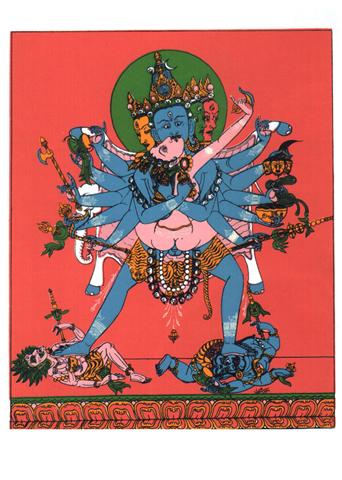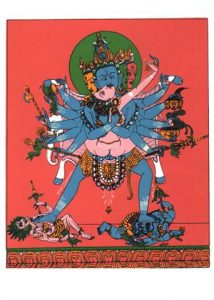There are folks who poetically describe Magick as the Tantra of the West without having much of a grasp on what Tantra actually is, their primary exposure to the concept being through the bowdlerized version of one sliver of Tantric theory and practice focused on sex. SO — here’s a chance to level up for free, David B. Gray’s Tantra and the Tantric Traditions of Hinduism and Buddhism
The Summary states:
“The term tantra and the tantric traditions of Hinduism and Buddhism have been subjected to a great deal of misunderstanding in both India and the West. There is a diverse range of attitudes toward the tantric traditions, ranging from their emic understandings as paths to liberation to the relatively widespread associations of the tantric traditions with sorcery and libertine sexuality. Likewise, tantric traditions are also extremely diverse, which has made it difficult to develop a definition broad enough to cover the various tantric traditions without being overly broad. There have also been many attempts to discern the origins of the tantric traditions. While there is very little evidence supporting the hypothesis that any of the tantric traditions existed before the 5th century CE, there have been attempts to trace back these traditions much earlier, to the time of the Buddha or the ancient Hindu sages, or even back to the Indus Valley civilization. In overviewing various attempts to date these traditions, it appears that the first tantric traditions to emerge in a distinct form almost certainly first emerged in a Hindu context around the mid-first millennium CE.
“An overview of the history of tantric traditions, then, should begin with a survey the development of the Hindu tantric traditions, from the mid-first millennium CE up to the colonial period, when tantric traditions in South Asia generally entered a period of decline, followed by a renaissance in the 20th century. The historical appearance of Buddhist tantric traditions occurs a few centuries later, during the 7th century. Buddhist tantric traditions were strongly influenced at their inception by preexisting Śaiva Hindu traditions, but they also drew on a growing body of ritual and magical practices that had been developing for several centuries, since at least the 5th century CE, in Mahāyāna Buddhist circles. The spread of tantric traditions quickly followed their development in India. They were disseminated to Nepal; Central, East, and Southeast Asia; and also, much later, to the West. Tantric Hindu and Buddhist traditions were also a significant influence on a number of other religious traditions, including Jainism, Sikhism, the Bön tradition of Tibet, Daoism, and the Shintō tradition of Japan.”


